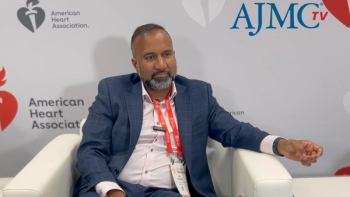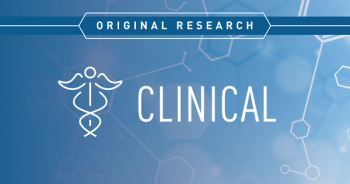
MFN Drug Pricing: Risks to Access, Affordability, and Innovation in Health Care
Key Takeaways
- The MFN executive order aims to reduce US drug prices by aligning them with international prices, facing legal and industry challenges.
- Pharmacy benefit managers (PBMs) significantly influence US drug prices, controlling 79% of prescription drug claims, raising concerns about cost-driving practices.
Adam Colborn, JD, associate vice president of congressional affairs at AMCP, shares insights on the impact of the Most Favored Nation drug pricing order when it comes to access, affordability, and innovations in US health care.
In a move to lower health care costs for Americans, HHS announced earlier this year that it intends to take swift action to implement President Donald Trump’s Most Favored Nation (MFN) prescription drug pricing executive order.1 Under the direction of HHS Secretary Robert F. Kennedy Jr. and CMS Administrator Mehmet Oz, MD, the initiative sets specific pricing targets for pharmaceutical manufacturers, promising relief for American patients long burdened by some of the world’s highest drug prices.
Trump has claimed this executive order would slash prescription drug prices by up to 59%, by tying US prices to those paid in other countries for the same medications—a proposal that was previously blocked by the courts during his first term.2
In the US, drug prices are largely shaped by pharmacy benefit managers (PBMs), which serve as intermediaries between pharmacies, health plans, pharmaceutical manufacturers, and wholesalers. The 3 largest PBMs now control negotiations for nearly 79% of all prescription drug claims, up from 52% in 2004. However, PBMs have come under scrutiny for driving up costs through opaque pricing practices, overcharging health plans, and steering patients toward affiliated pharmacies instead of independent alternatives.
However, opposition to Trump’s revived MFN order has been vocal, particularly from within the pharmaceutical industry and policy experts who question both its legality and its potential consequences, with industry leaders argue the order threatens pharmaceutical innovation, jobs, and patient access to lifesaving treatments.3 During an opinion
In a written Q&A interview to AJMC, Adam Colborn, JD, associate vice president of congressional affairs at AMCP, shares further insights on the impact of MFN drug pricing when it comes to access, affordability, and innovations in US health care.
AJMC: What are the potential implications of this policy for drug access, availability, and patient safety—particularly within managed care pharmacy?
Colborn: It’s difficult to evaluate the impact of this policy on access, affordability, or safety at this stage. The impact will be substantially influenced by details, and the executive order announcing MFN was very light on specifics. If I had to guess, I’d say the impact on affordability would be modest—at best—if it goes into effect, but I’m not confident that a final MFN scheme will ever be implemented.
AJMC: With a recent
Colborn: The policy resonates with voters because it addresses a real issue—the price of health care—and connects it to an emotionally accessible solution. People see headlines about other countries paying lower prices and feel like they’re getting ripped off. In actuality, recent analysis shows that many US patients spend a lower percentage of their income on generics and mid-price brand name drugs compared to similar foreign countries, although high-cost brand name drugs present real affordability challenges for middle- and low-earners.
Unfortunately, real solutions to addressing affordability are much more complicated than stating the US will match an international reference price. Many foreign countries have health technology assessment bodies with legal authority to set prices. That approach has not found much support in the US to date. Federal law generally prohibits the US government from setting prices, although the Inflation Reduction Act made changes to allow HHS to negotiate the price of certain single-source drugs in Medicare.
Ultimately, this feels like more of a messaging or campaign proposal than a workable strategy—particularly because it is not clear what legal authority the administration plans to use to compel participation from manufacturers. The first Trump administration’s MFN efforts were blocked by courts due to a lack of statutory authority and, thus far, Congress has not undertaken any action to change that or signaled a desire to do so.
AJMC: The president set a 30-day deadline for pharmaceutical companies to reach pricing deals, reportedly engaging in direct talks with companies. Can you shed light on what is known about those negotiations and whether any agreements were reached by the June 11 deadline?
Colborn: Some manufacturers have met with HHS to discuss these deals, but it’s not clear what those discussions might yield. The uncertainty around legal authority may mean that no deals were struck, despite the stated deadline.
AJMC: What are the potential impacts of this approach on federal health programs, and how might it affect innovation and long-term cost containment?
Colborn: That’s the big question. Due to the lack of details, it’s very unclear how the MFN proposal will impact things like Medicaid best price under the Medicaid Drug Rebate Program (MRDRP) as well as Medicare negotiations. There’s been some speculation that the MFN will end up as an exclusively direct-to-consumer program to avoid issues with the MDRP and Medicare negotiations, but that seems unlikely to succeed.
One of the major concerns with the MFN proposal is that implementation may incentivize manufacturers to move their research and development out of the US or invest fewer resources into R&D. This is particularly true for rare diseases or cell and gene therapies, where development is very expensive. Policymakers need to carefully weigh the pros and cons of actions that may result in fewer therapies coming to market.
References
1. HHS, CMS set most-favored-nation pricing targets to end global freeloading on American patients. HHS. May 20, 2025. Accessed July 16, 2025.
2. Bonavitacola J. Trump executive order could reduce pharmaceutical costs by 59%. AJMC. May 12, 2025. Accessed July 16, 2025.
3. Joszt L. HHS sets pricing target for Trump’s most favored nation drug price model. AJMC. May 20, 2025. Accessed July 16, 2025.
4. Joszt L. The future of drug pricing: most favored nation, PBMs, and patient access. AJMC. July 11, 2025. Accessed July 16, 2025.
Newsletter
Stay ahead of policy, cost, and value—subscribe to AJMC for expert insights at the intersection of clinical care and health economics.






























































